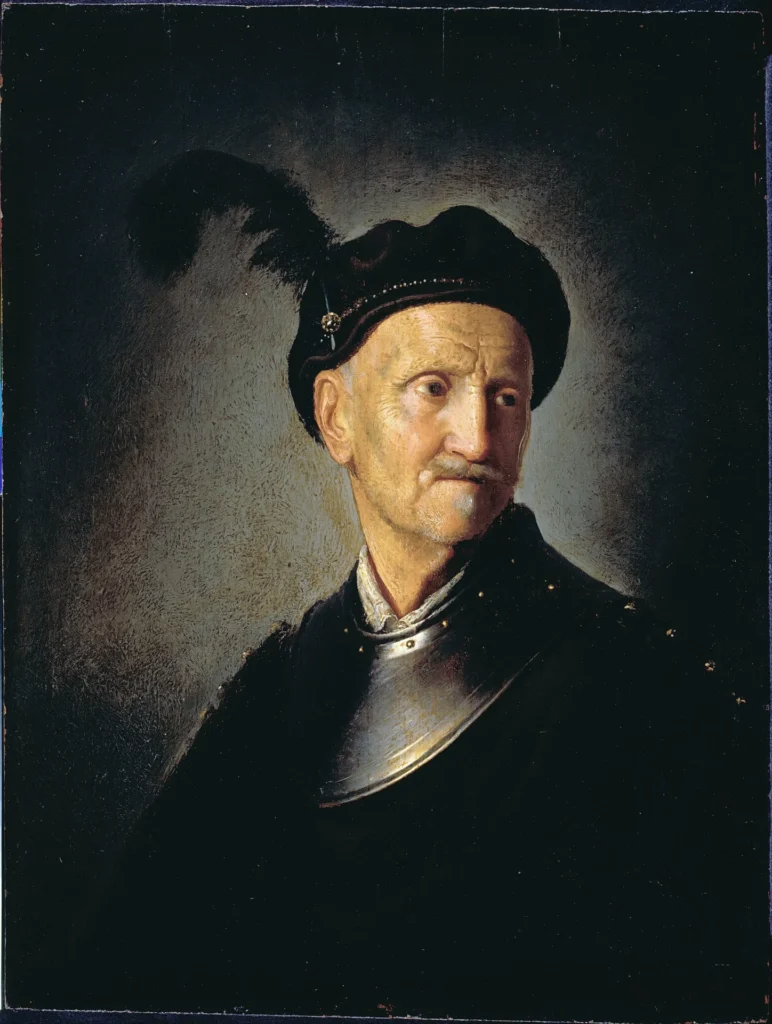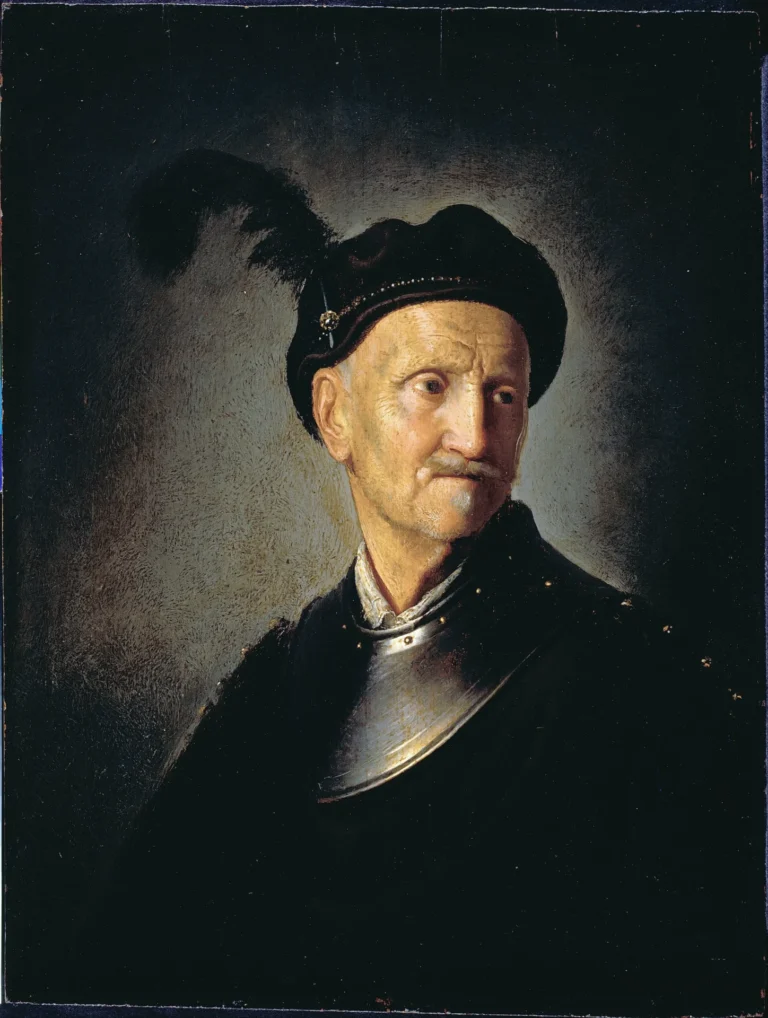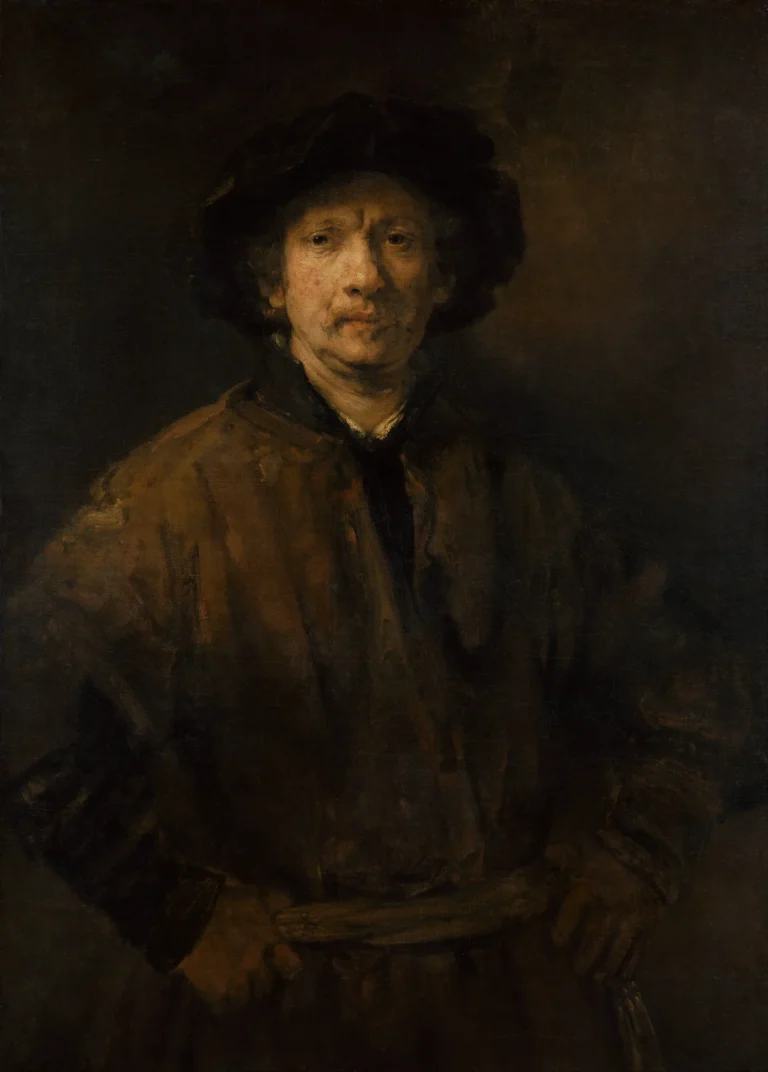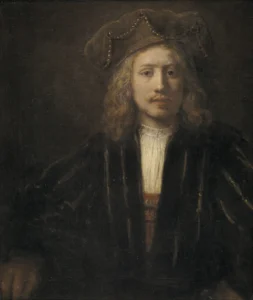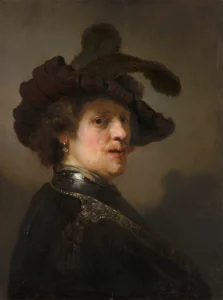A Man in Armour
"A Man in Armour" is an iconic painting by Rembrandt van Rijn from 1655, crafted during his prolific Amsterdam years. This oil on canvas portrays a youthful male figure clad in elaborate armor, holding a lance and shield. The subject's attire melds contemporary and classical designs, suggesting themes of antiquity and heroism. Identity speculation ranges from Achilles to gods like Mars, revealing Rembrandt's deep engagement with classical themes. This artwork has a rich history, originally commissioned by Don Ruffio and now residing in Glasgow's Kelvingrove Art Gallery and Museum.
Year 1655
About the Artwork
Originally commissioned by the Italian nobleman Don Ruffio, "A Man in Armour" was intended as a portrayal of Alexander the Great. However, dissatisfaction with its initial dimensions led to an enlargement, allowing more detail to emerge. The painting’s historical significance lies not only in its subject but also in its layered identity interpretations, from classical heroes to divine figures across various cultures. Each layer of meaning offers a glimpse into Rembrandt's artistic genius; his adept manipulation of light and color draws the viewer into a world that bridges the past and present. The painting's journey through history culminated in its current home at the Kelvingrove Art Gallery and Museum, where it stands as a testament to both Rembrandt's and Glasgow's cultural heritage.




